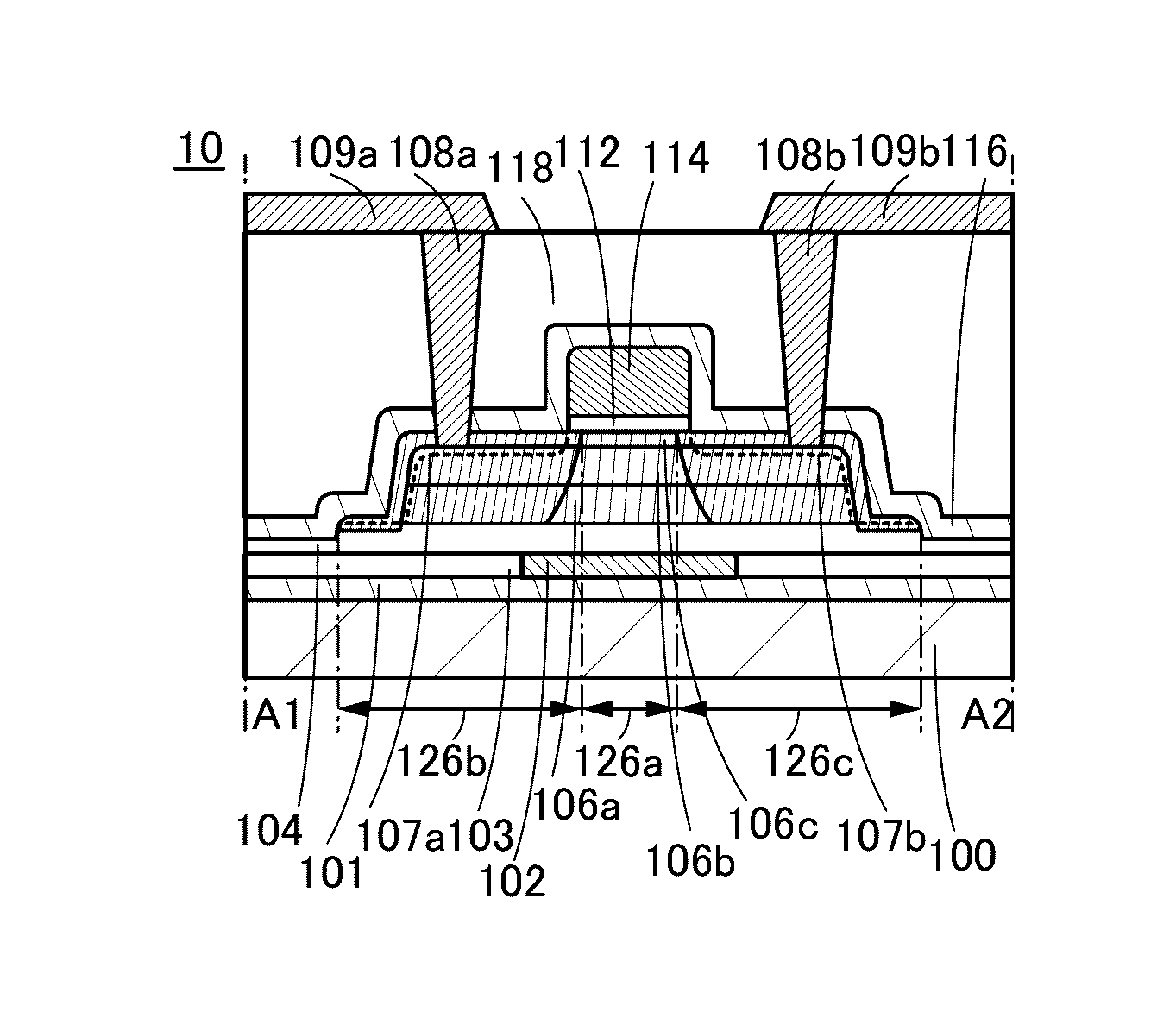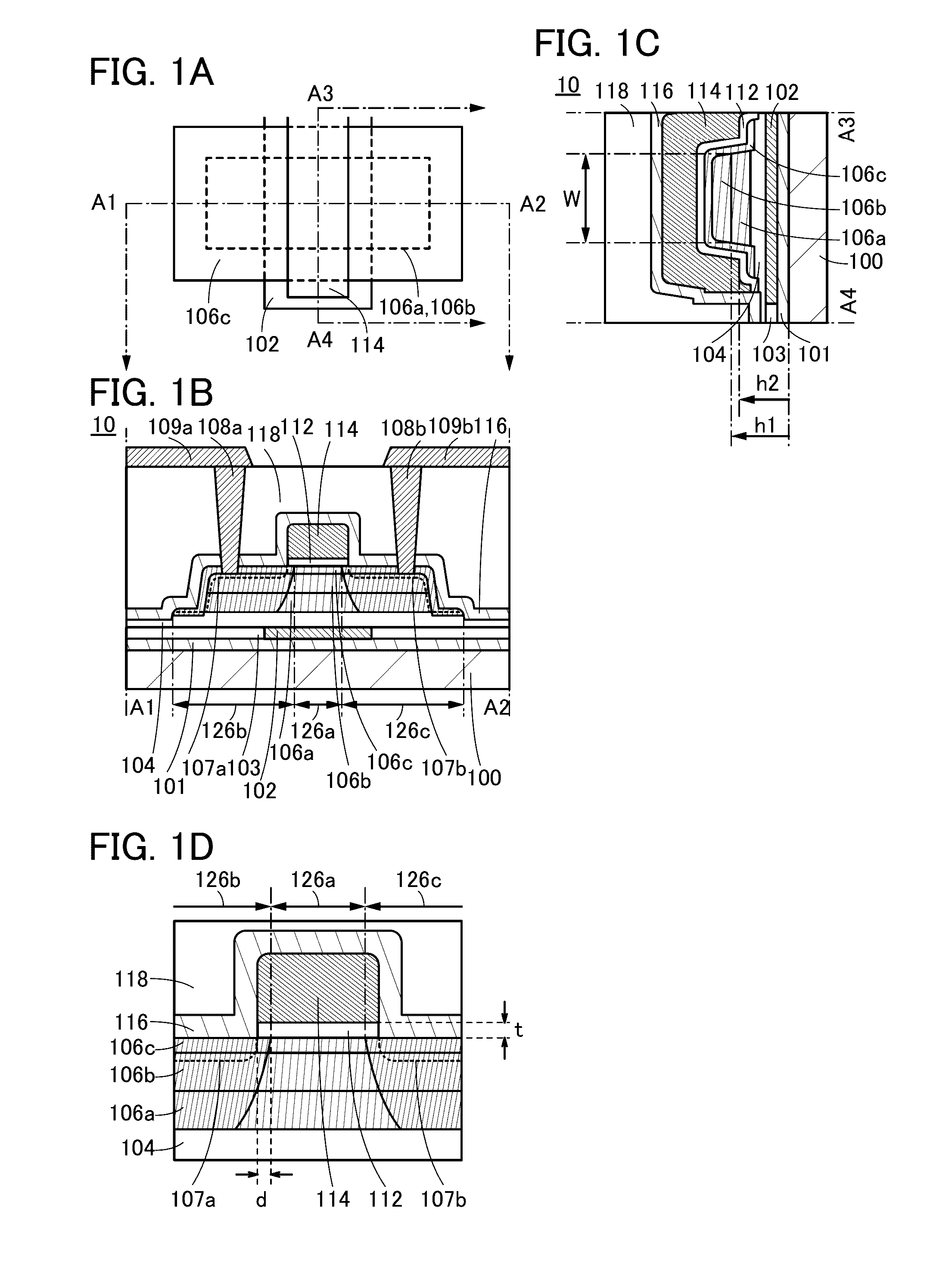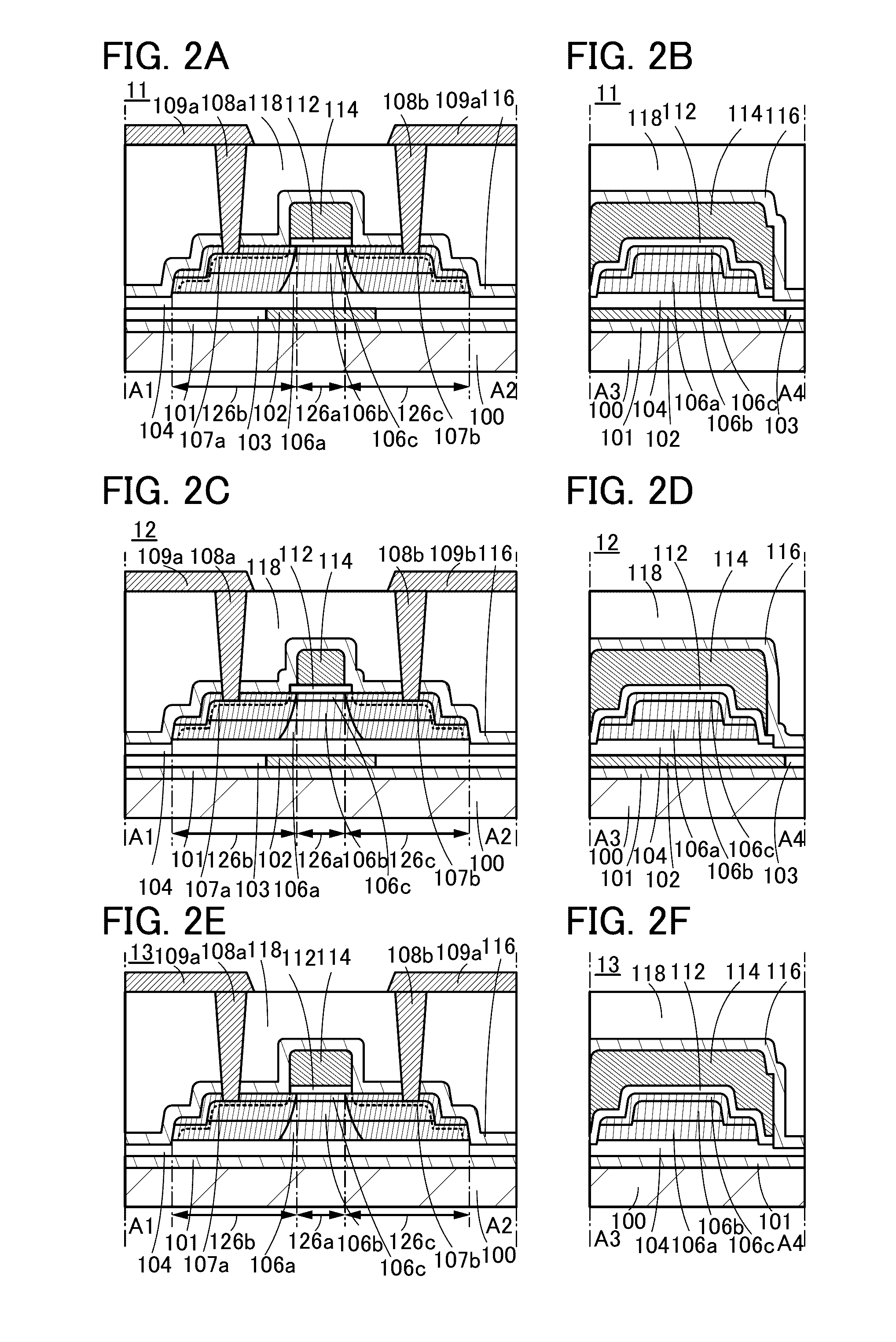Method for manufacturing semiconductor device
a semiconductor and manufacturing method technology, applied in the field of transistors, can solve the problems of low power consumption of the display device in which the transistor includes an oxide semiconductor is used, and achieve the effects of low leakage current, high on-state current, and stable electrical characteristics
- Summary
- Abstract
- Description
- Claims
- Application Information
AI Technical Summary
Benefits of technology
Problems solved by technology
Method used
Image
Examples
embodiment 1
[0105]In this embodiment, structures of semiconductor devices of embodiments of the present invention will be described with reference to FIGS. 1A to 1D, FIGS. 2A to 2F, and FIGS. 3A to 3C.
[0106]Structures of transistors, which are examples of the semiconductor devices of embodiments of the present invention, will be described below.
[0107]A structure of a transistor 10 will be described with reference to FIGS. 1A to 1C. FIG. 1A is a top view of the transistor 10. FIG. 1B is a cross-sectional view taken along dashed-dotted line A1-A2 in FIG. 1A. FIG. 1C is a cross-sectional view taken along dashed-dotted line A3-A4 in FIG. 1A. A region along dashed-dotted line A1-A2 shows a structure of the transistor 10 in the channel length direction, and a region along dashed-dotted line A3-A4 shows a structure of the transistor 10 in the channel width direction. The channel length direction of a transistor refers to a direction in which carriers move between a source (source region or source elec...
modification example 1
of Transistor
[0217]Modification examples of the transistor 10 will be described below with reference to FIGS. 2A to 2F and FIGS. 3A to 3C. FIGS. 2A to 2F and FIGS. 3A to 3C are cross-sectional views of the transistors in the channel length direction and those in the channel width direction like FIGS. 1B and 1C. Note that the components in the following modification examples of the transistor 10 can be combined with each other as appropriate.
[0218]A transistor 11 illustrated in FIGS. 2A and 2B is different from the transistor 10 in that the end portion of the side surface of the semiconductor 106b is positioned inward from the end portion of the side surface of the insulator 106a. In other words, in the transistor 11, the peripheries of the insulators 106a and 106c are positioned outward from the periphery of the semiconductor 106b, and the semiconductor 106b is surrounded by the insulators 106a and 106c. Furthermore, the end portion of the side surface of the insulator 106a and the ...
embodiment 2
[0226]In this embodiment, a method for manufacturing the semiconductor device of one embodiment of the present invention will be described with reference to FIGS. 4A to 4F and FIGS. 5A to 5F.
[0227]A method for manufacturing the transistor 10 illustrated in FIGS. 1A to 1D will be described below.
[0228]First, the substrate 100 is prepared. Any of the above-mentioned substrates can be used for the substrate 100.
[0229]Next, the insulator 101 is formed. Any of the above-mentioned insulators can be used for the insulator 101.
[0230]The insulator 101 may be formed by a sputtering method, a chemical vapor deposition (CVD) method, a molecular beam epitaxy (MBE) method, a pulsed laser deposition (PLD) method, an atomic layer deposition (ALD) method, or the like.
[0231]CVD methods can be classified into a plasma enhanced CVD (PECVD) method using plasma, a thermal CVD (TCVD) method using heat, a photo CVD method using light, and the like. Depending on a source gas, CVD methods can be classified i...
PUM
 Login to View More
Login to View More Abstract
Description
Claims
Application Information
 Login to View More
Login to View More - R&D
- Intellectual Property
- Life Sciences
- Materials
- Tech Scout
- Unparalleled Data Quality
- Higher Quality Content
- 60% Fewer Hallucinations
Browse by: Latest US Patents, China's latest patents, Technical Efficacy Thesaurus, Application Domain, Technology Topic, Popular Technical Reports.
© 2025 PatSnap. All rights reserved.Legal|Privacy policy|Modern Slavery Act Transparency Statement|Sitemap|About US| Contact US: help@patsnap.com



